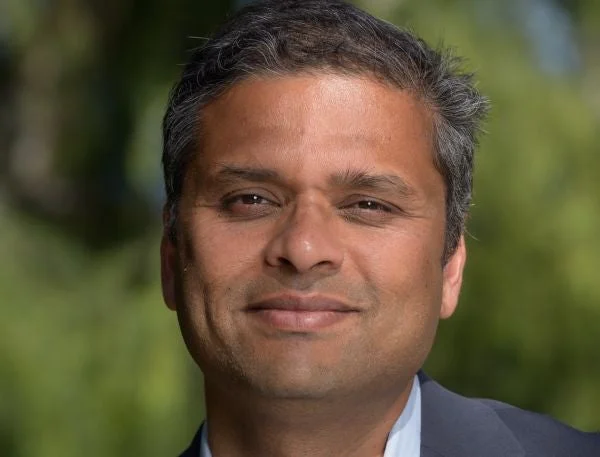Real-Time BNB Signal Analytics
Real-Time BNB Signal Analytics
When a company issues a press release about a top executive departure, it's usually a carefully orchestrated dance of platitudes and well-wishes. But when Intel's chief technology and artificial intelligence officer, Sachin Katti, announced his jump to OpenAI just months after being handed the reins of Intel's entire AI strategy, the corporate niceties felt less like genuine gratitude and more like a thinly veiled admission of a deeper problem. This isn't just another personnel change; it’s a data point screaming about the fundamental challenges `intel` faces in its ambition to be a major player in the AI arena.
Katti was appointed to his dual role as CTO and AI officer in April, a move Intel CEO Lip-Bu Tan touted as critical for the company's "overall AI strategy and AI product road map." Yet, here we are, barely past the summer, and `sachin katti intel` is now `sachin katti openai`. He’s not just moving; he’s moving to the very frontier of AI development, tasked with building out OpenAI’s compute infrastructure for artificial general intelligence (AGI), a theoretical form of AI akin to human intelligence. I've looked at hundreds of these executive movements, and this particular timing is, frankly, jarring. It suggests a swift, perhaps sudden, realization by a key leader about where the real innovation, and the real resources, are currently being deployed. What does this swift departure truly signal about the internal confidence in Intel's AI roadmap?
Let’s strip away the corporate speak. Intel confirmed Katti’s departure, stating that AI remains a "highest strategic priority" and CEO Lip-Bu Tan would personally take over Katti’s former groups. This isn’t a sign of strength; it’s a reactive measure. When your top AI architect, appointed just months prior, bails for the company actively defining the bleeding edge of AI, it raises serious questions about the perceived viability of your own internal initiatives. It's like trying to build a world-class racing team, only to have your lead engineer jump ship for the competitor who just won the championship, citing their superior engine design.
This isn't an isolated incident, either. Katti's exit follows a string of other high-profile departures, including former Global Channel Chief John Kalvin and VP of Data Center AI Product Management Saurabh Kulkarni. While Intel has brought in external talent and restructured its leadership under Tan, the sheer volume of senior-level churn, especially in critical areas like AI and data centers, suggests a lack of stable direction. The digital ink barely dry on Katti's promotion memo, and now he's off to OpenAI, where President Greg Brockman is "incredibly excited" to have him design and build their AGI compute infrastructure. This isn't just about losing a person; it's about losing the strategic vision and technical expertise that person embodied, especially to a direct competitor in the broader AI ecosystem.

Now, let’s talk data. Intel recently "retooled" its data center AI strategy after missing a rather modest $500 million revenue expectation for its Gaudi chips last year. A half-billion dollar miss in a market exploding with demand for AI compute isn’t just a rounding error; it’s a flashing red light. While `intc` stock has climbed significantly this year—to be precise, 90.16% year to date—we need to look beyond the general market sentiment and into the operational details.
Intel's third-quarter revenue, while beating analyst expectations at $13.65 billion, showed only modest year-over-year growth. The Client Computing Group saw a 5% bump, but the Data Center and AI segment actually slippe`d` by 1%. This is the critical data point here. You’re losing your top AI talent to the very company pushing the boundaries of AI, while your own Data Center and AI revenue is contracting. This discrepancy is stark. Intel touts a new annual GPU release cadence and a focus on open systems, but without the internal talent to execute or the market traction to drive revenue, these initiatives risk becoming commitments on paper rather than market-leading products. Where's the correlation between the stated "highest strategic priorities" and the actual financial performance in the very segment Katti was supposed to lead?
The company faces stiff competition from Nvidia and TSMC in the AI chip space, and while its central processors are used in AI server systems, it has yet to produce a data center AI chip that truly rivals Nvidia's offerings. Katti’s expertise in networking, edge computing, and machine learning at the edge (from his Stanford work and Kumu Networks background) was precisely what Intel needed to bridge that gap. His departure doesn't just leave a hole; it widens the chasm between Intel's aspirations and its current capabilities.
The narrative Intel wants us to believe is one of strategic retooling and unwavering commitment to AI. But Katti’s move to OpenAI, combined with a string of executive exits and a contracting Data Center and AI segment, paints a different picture. It suggests that for some of the brightest minds, Intel simply isn't the place where the most impactful AI work is happening right now. The `intel stock` might be performing well on broader market trends and CEO Tan’s turnaround efforts, but the internal brain drain in its most critical growth area is a quantifiable risk. The real cost of `sachin katti openai` isn't just his salary; it's the erosion of confidence and the lost opportunity to genuinely lead in the defining technological revolution of our time.